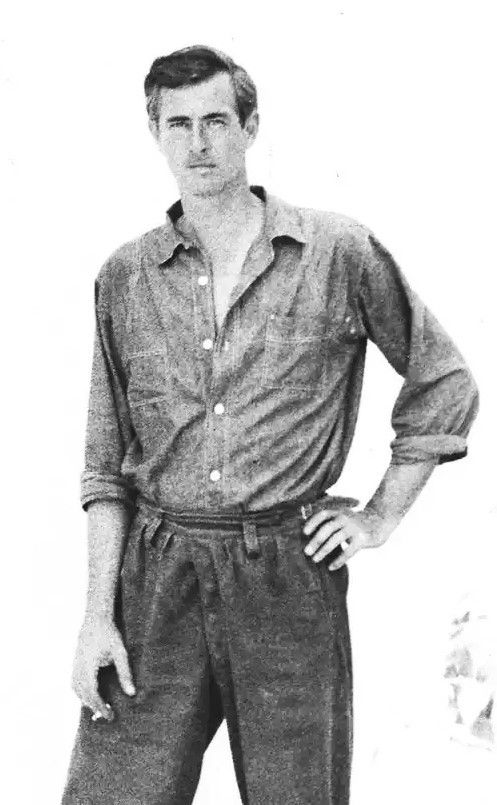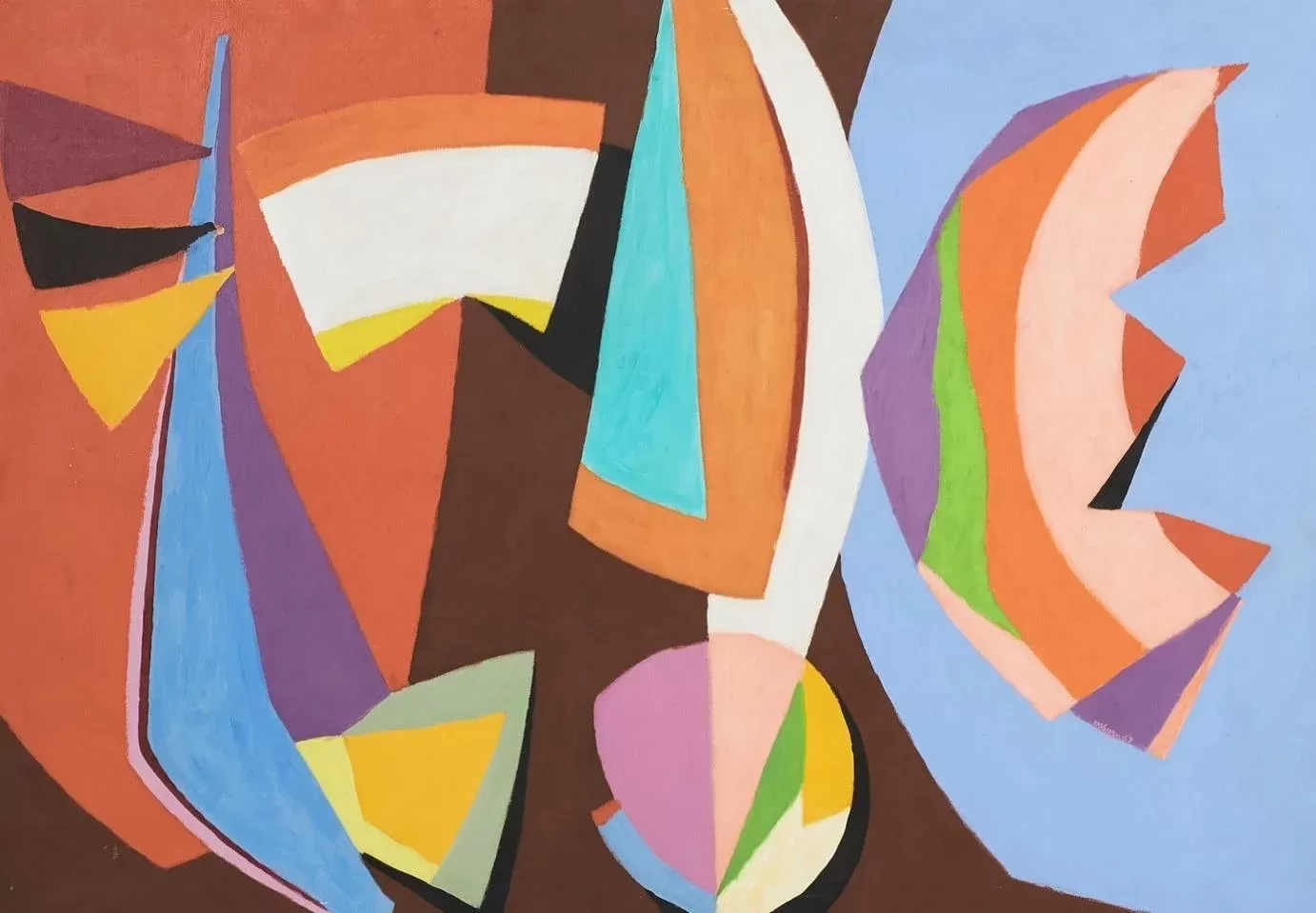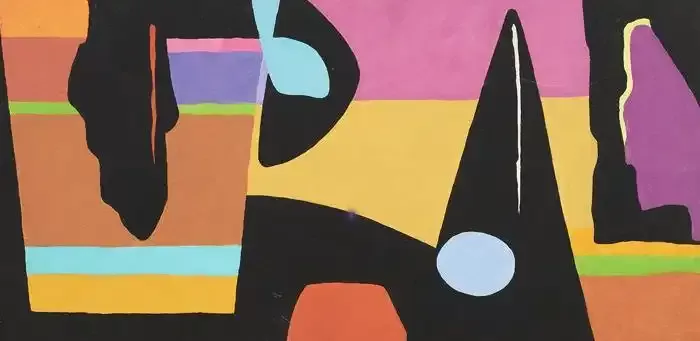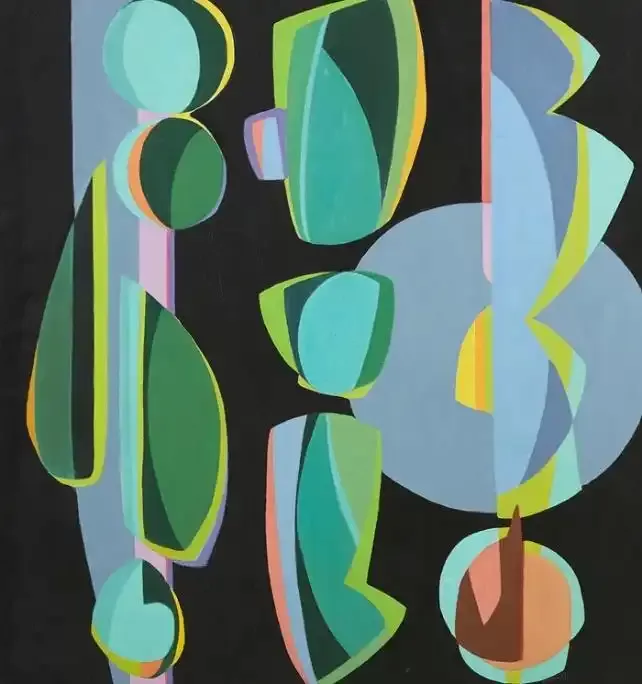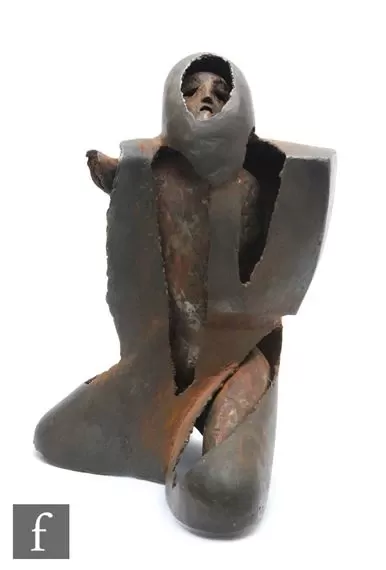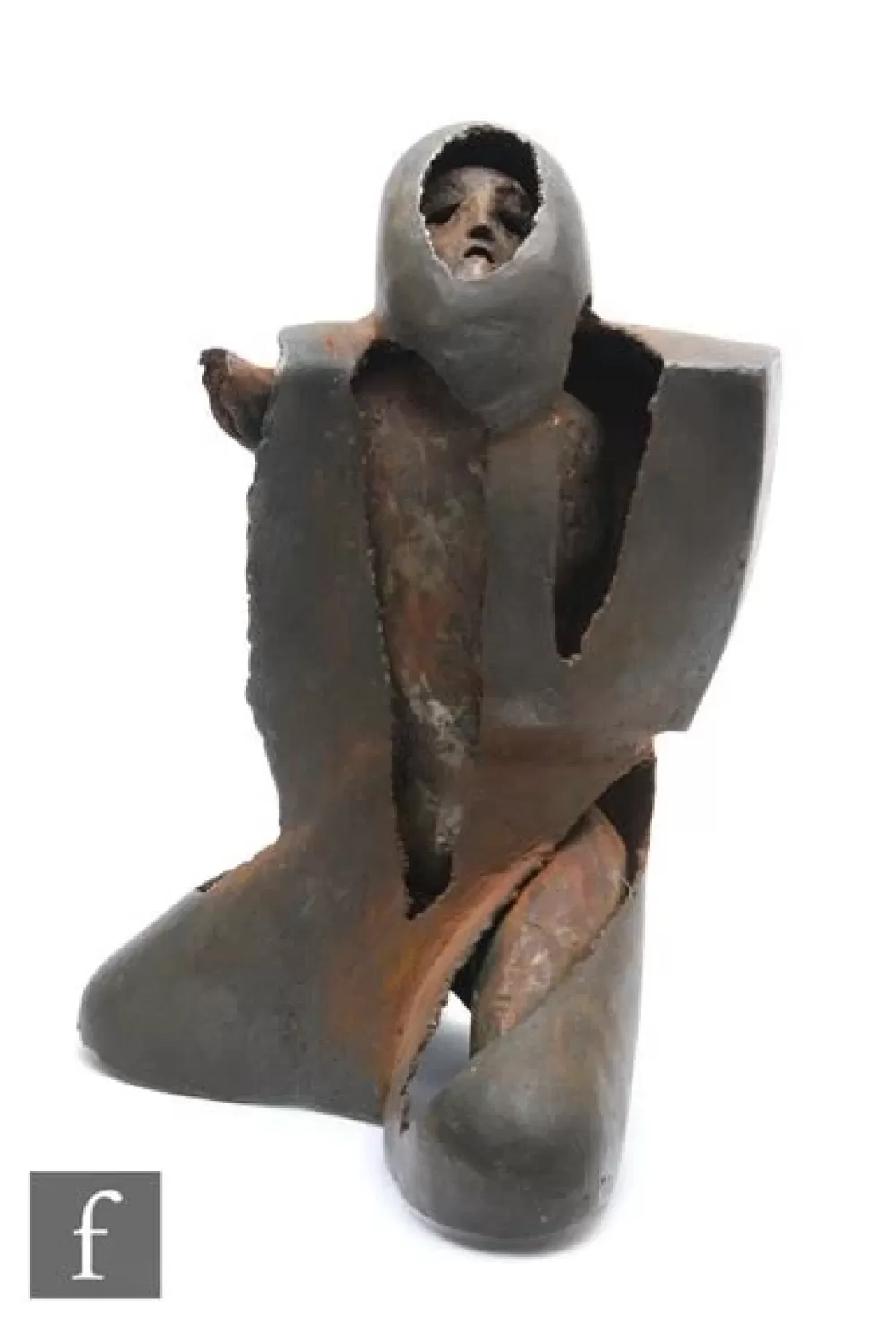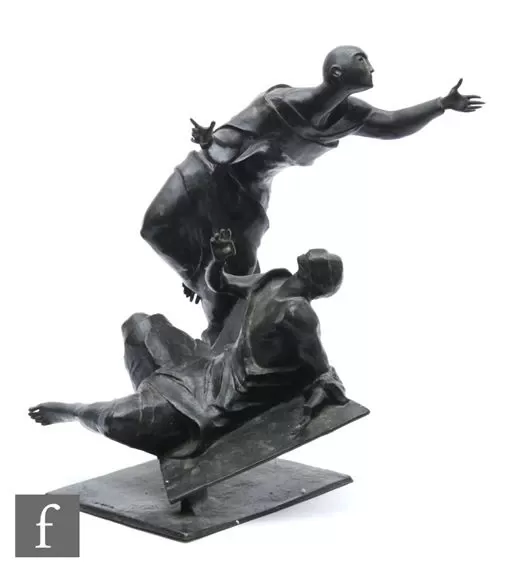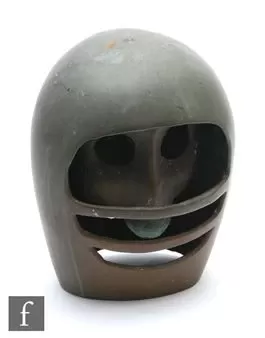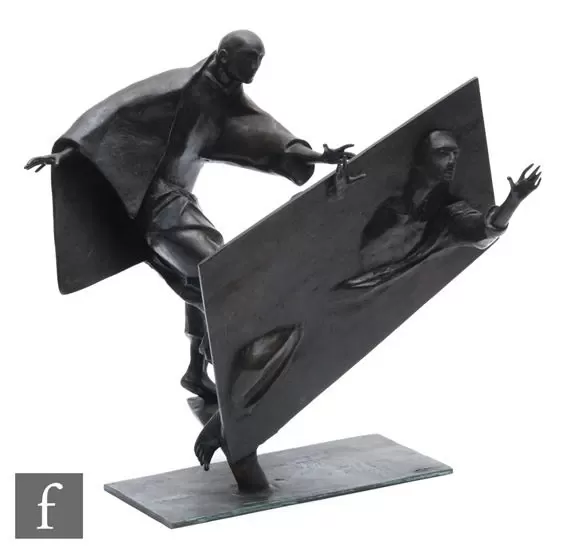
Bayard Osborn (1912-2012)
Artistic Beginnings (1936-1940)
Osborn grew up surrounded by artists, collectors, and intellectuals His grandfather, William Church Osborn was a great collector of French art and made several important gifts of artwork to the Metropolitan Museum, including such paintings as Edouard Manet’s “The Spanish Singer” and Paul Gauguin’s “Two Tahitian Women.”, as well as works by Monet, Pissarro and William Blake. His mother was a New York socialite and art patron, whose famous dinner parties included guests like: André Breton, Joan Miró, Isamu Noguchi and longtime friend Arshile Gorky
In 1936, Bayard Osborn started studying Picasso, Dali, Duchamp, Juan Gris, Braque and others. At the age of 17, he travelled to Mexico to work at The Taller de Gráfica Popular (“People’s Graphic Workshop”) together with Leopoldo Méndez and Alfredo Zalce. Here he was introduced to the native American sand painting technique by his uncle Oliver Hazard Perry La Farge II, an anthropologist and champion for American Indian rights and president of the Association on American Indian Affairs.
Education (1940-1942)
In 1940, Osborn moved to Greenwich Village in the area South of Union Square at 30 East 14th Street, a thriving collection of art studios and lived next door to Robert de Niros father. He studied at the Art Students League in New York and became a pupil of Arshile Gorky. In 1942 he moved to Boston and entered The Department of Architecture at Harvard University.
World War Two ( 1942-1945)
In 1942, Osborn’s studies at Havard were interrupted when he decided to volunteer for the U.S. Army Armored Reconnaissance Battalion under General Patton. Arshile Gorky gave Osborn a small painting that he hung inside his tank, so as to bring him good luck. In 1945, Osborn participated at the liberation of the Mauthausen, one of the most notorious Nazi concentration camps located in Austria. Osborn was deeply affected by what his witnessed and made sketches and notes that later was used by prosecutor Thomas Joseph Dodd at both the Mauthausen camp trials and the Nuremberg trials. Osborn was awarded the Bronze Medal for heroic action in combat.
Post wars years at Connecticut ( 1945-1948)
After the war Osborn returned to the U.S and decided to reside at his family’s estate in Stonington, Connecticut There, he continued to paint under the guidance of Gorky and befriended Alexander Calder. He exhibited at The Mystic Gallery and also earn a living by designing and building country houses. In 1946, Gorky accidentally set fire to his studio. It burned to the ground and Gorky lost much of the work he had done in the last three years. Osborn gave Gorky one of his easels to help out. Osborn bought a little house in Rhode Island and begun to exhibit at local galleries and at group shows in NYC. In 1948, Gorky took his own life, hanging himself in his barn studio. Gorkys wife, Mougouch Gorky, gave Gorkys palette to Osborn.
New York School ( 1949-1956)
In 1949, Osborn returned to New York and rented an apartment on 4th street on 5th Avenue, belonging to his friend, photographer and art critic, Milton Gendel. Osborn became more involved in the New York art scene, with associations to many abstract expressionists, including family friend and American artist, Isamu Noguchi, as well as Jeanne Reynal, Chaim Gross and American architect and designer Buckminster Fuller. Osborn meets the French/Russian sculptor, Guitou Knoop and they start a relationship. In 1952, Osborn travelled to Italy with Knoop, and they chose to reside in both Positano and Rome, It was here the couple met American author Truman Capote, and visited the many international art salons. While Osborn was in New York, Capote rented Osborns house in Connecticut together with the American novelist, Paul Dunphy. In 1954, Osborn participated at a group show at the Stable Gallery together with Jackson Pollock, Willem de Kooning, and Robert Rauschenberg
Expatriate life in Andalucía, Spain. ( 1957-1965) Torremolinos and Churriana
In 1957, Osborn travelled to Spain on holiday He wanted to get to know the homeland of so many painters he deeply admired, such as Picasso and Goya. Osborn was so impressed by its nature and abstract art scene that he decides to stay and rented a house in Torremolinos. For Spanish art, the year 1957 witnessed the beginning of the influential collectives: El Paso and Equipo 57 (1957-1962) that were based in Paris and in Córdoba, Andalucia, respectively. In 1959 Osborn bought a small property close to the village of Churriana, Malaga. Here, he befriended Ernest Hemingway, and British writer, Gerald Brenan, and attended parties with many visiting actors like Orson Wells, David Niven, Vivienne Leigh and Lawrence Olivier. In 1961, Osborn exhibited for the first time in Spain, at Sala Neblí, Madrid and in 1964, participated in a group show at the Malaga Museum
Castle Rocca Sinibalda, Italy. ( 1965-1966)
In 1965, Osborn was invited by American patron of the arts, Caresse Crosby to stay at her castle in Rocca Sinnibalda, Italy. Crosby had bought the castle in the 1950s and went on to establish an artist’s colony for American expatriates in it, as well as hosting the likes of Salvador Dali, whose international career, she helped launch, various Beat poets or the era, and her friend, Peggy Guggenheim. Osborn starts working on sculptures, using iron to make abstract pieces He exhibited at the Modern Art Gallery in Milan in 1966.
United Kingdom ( 1970-1981)
Through the 1970s, Osborn took up residence in London. During this period, be held exhibitions in the US and Switzerland, Basel, Chicago, Toronto, Boston and Los Angeles under the Jonathan Poole Gallery, and at the Aaronson Gallery in Atlanta, Georgia, USA.
The Last years in Gaucin, Spain ( 1983-2012)
In 1983, Osborn bought old, abandoned sausage factory the mountain village of Gaucin, Malaga. He converted it into a large studio with an adjoining house. During his last years in Spain, he exhibited at Cruz Herrera Museum’s art gallery in La Linea, Cadiz and had a group show at the Manuela Vilches Gallery in Marbella, and solo exhibitions at the School of Architects exhibition hall. In 2012, Osborn passes away from long term illness.
Selected exhibitions and collections
Osborn has works in many collections including that of The Spanish royal family at the Zarzuela Palace; the Museum of the National Assembly in Madrid; the Museum of Fine Arts of the Complutense University; The National Library; The Picasso Foundation in Malaga; and the International Museum of Contemporary Art in Tangiers.
Solo and group shows:
Stable Gallery, New York, USA.
Sala Neblí, Madrid, Spain.
Malaga Museum, Spain.
Modern Art Gallery, Milan, Italy.
Pramm Gallery, Stockholm, Sweden
Jonathan Poole Gallery, Los Angeles, USA.
Aaronson Gallery in Atlanta, Georgia, USA
Mystic Gallery, Connecticut, USA.
Audubon Galley, New York, USA.
Art Basel, Switzerland.

